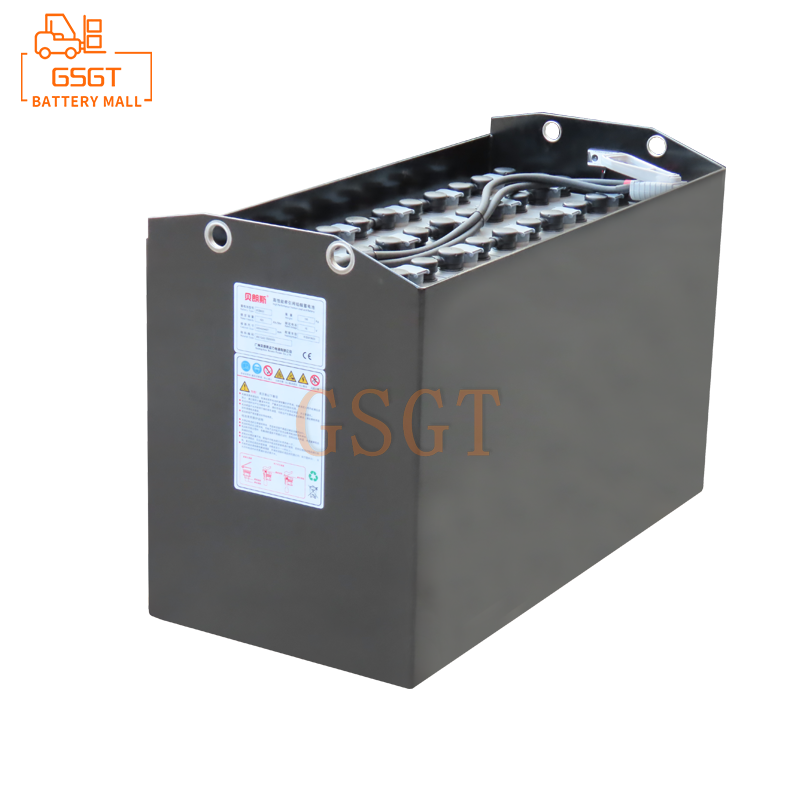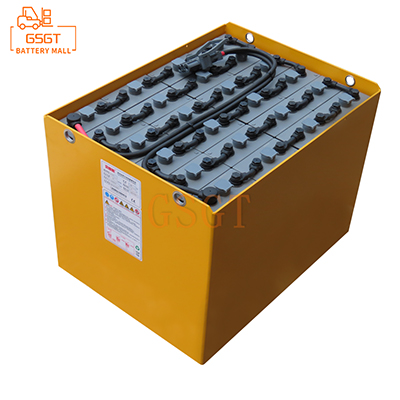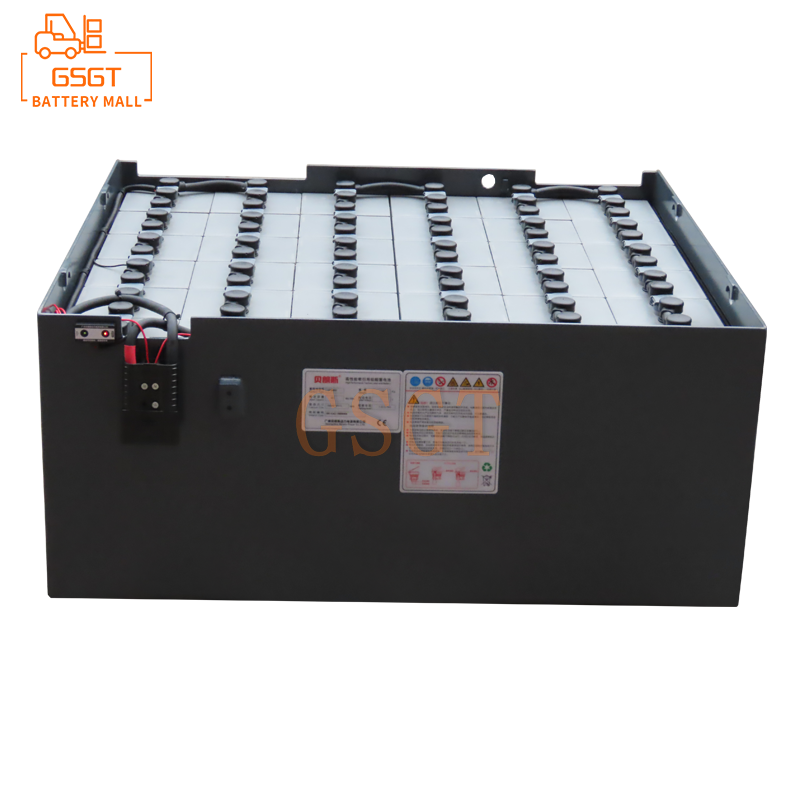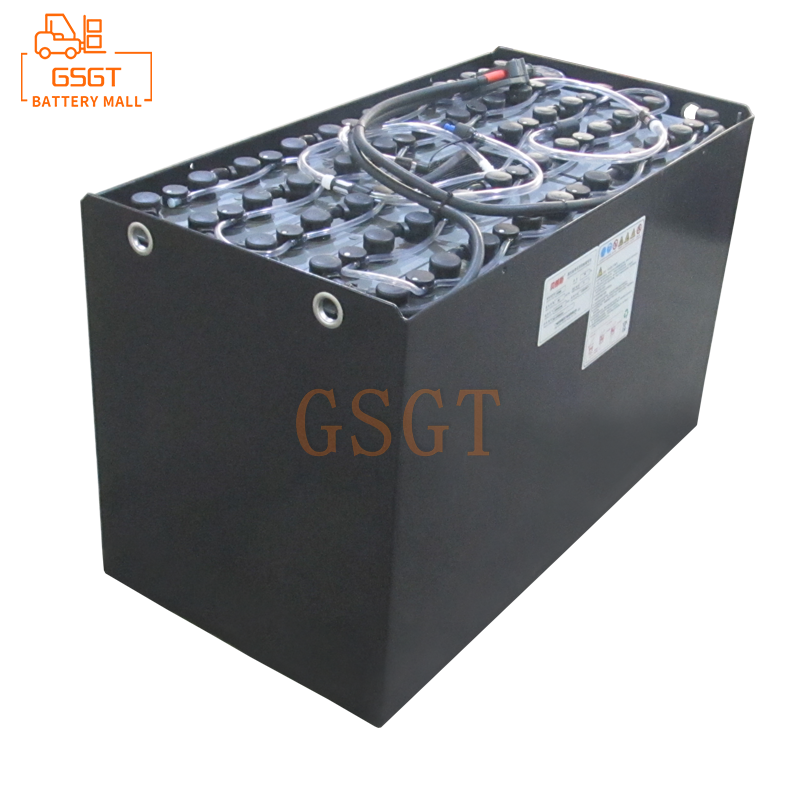Time:2025-05-26 10:50:02
Browse:598
In modern logistics and warehousing operations, forklifts play an indispensable role, and lead-acid batteries, as the core power source of forklifts, their performance directly affects operational efficiency and operating costs. Electrolyte, as the key medium for lead-acid batteries to achieve the mutual conversion of electrical energy and chemical energy, its correct addition and maintenance are important links to ensure the service life and working performance of the battery. This article will systematically and comprehensively explain the relevant knowledge and operation norms of adding electrolyte to forklift lead-acid batteries for you, providing practical references for the scientific maintenance of forklift batteries.
1. Basic Understanding of Lead-Acid Battery Electrolyte
(1) Composition and Function of Electrolyte
The electrolyte of lead-acid batteries is mainly composed of sulfuric acid and distilled water mixed in a certain proportion. During the battery charging and discharging process, the electrolyte participates in complex electrochemical reactions: during charging, sulfuric acid reacts with the active substances on the plates, converting electrical energy into chemical energy for storage. When discharging, chemical energy is converted back into electrical energy, providing power for the operation of forklifts. The concentration and liquid level of the electrolyte directly affect the chemical reaction efficiency and performance of the battery. An appropriate electrolyte concentration can ensure that the electrochemical reaction proceeds fully, enhancing the battery's charging and discharging capabilities as well as its driving range.
(2) Reasons for electrolyte loss
Evaporation loss: During the long-term operation of a forklift, the battery generates heat due to charging and discharging, causing the water in the electrolyte to evaporate. Especially in high-temperature environments or during frequent high-current charging and discharging, the evaporation rate of water increases.
Electrolytic loss: During the charging process, water electrolysis generates hydrogen and oxygen, which escape from the battery interior, resulting in a reduction in moisture. When overcharging or the charging current is too large, the electrolytic reaction intensifies and water loss becomes more obvious.
Leakage loss: Damaged battery casing, poor sealing or loose connection parts may cause electrolyte leakage, resulting in a drop in liquid level.
2. Judgment of the Timing for Adding electrolyte
(1) Regular inspection and observation
In order to accurately grasp the timing of adding electrolyte, it is necessary to regularly inspect the lead-acid battery of the forklift. It is recommended to check the electrolyte level and density of the battery every 50 to 100 hours of operation or once a week. When checking, open the liquid injection hole cover on the battery and observe the liquid level height. Under normal circumstances, the electrolyte level should be 10 to 15 millimeters above the top of the plate. If the level is lower than this standard, electrolyte needs to be added.
(2) Detection with the aid of tools
In addition to visual observation, a hydrometer can also be used to measure the density of the electrolyte to determine whether it needs to be added. The density of the electrolyte in a new battery is generally between 1.28 and 1.30g/cm³ at 25℃. As the battery is used, the sulfuric acid in the electrolyte continuously participates in chemical reactions, and its density gradually decreases. When the density of the electrolyte drops to around 1.20-1.22g/cm³ (at 25℃) and the liquid level is low, it is necessary to add an appropriate electrolyte to adjust the concentration and liquid level. At the same time, a dedicated battery detector can also be used to obtain parameters such as battery voltage and internal resistance, and comprehensively determine the battery's health status and addition requirements in combination with the state of the electrolyte.
3. Selection and Preparation of Electrolyte
(1) Selection of electrolyte type
Standard electrolyte: Suitable for most lead-acid batteries in normal use with no severe sulfation of the plates. Its sulfuric acid concentration and purity comply with national standards and can meet the battery maintenance requirements under general working conditions.
Specialized repair electrolyte: When the battery encounters problems such as plate sulfation and capacity decline, a specialized repair electrolyte can be selected. This type of electrolyte usually contains specific additives, which help improve the electrochemical reaction environment inside the battery, alleviate the sulfation of the plates, and restore the battery capacity to a certain extent.
(2) Quality requirements for the electrolyte
Purity: The electrolyte should be prepared with high-purity sulfuric acid and distilled water or deionized water to avoid the mixture of impurities. Impurities can lead to an increase in battery self-discharge, accelerate plate corrosion and shorten battery life. For instance, when metal impurities such as iron and copper are mixed into the electrolyte, they will form tiny primary cells on the surface of the plates, triggering local self-discharge.
Concentration: Different brands and models of forklift lead-acid batteries have slightly different requirements for electrolyte concentration, generally ranging from 1.28 to 1.30g/cm³ (at 25℃). Before adding the electrolyte, be sure to consult the battery user manual to confirm the appropriate concentration range and accurately measure and adjust it with a hydrometer.
(3) Add tools and safety protection
Tool preparation: Prepare clean plastic or rubber funnels, measuring cylinders, hydrometers and other tools. Avoid using metal tools to prevent the metal from reacting with sulfuric acid and contaminating the electrolyte.
Safety precautions: The sulfuric acid in the electrolyte is highly corrosive. When operating, acid and alkali resistant gloves, goggles and aprons and other protective equipment must be worn. If the electrolyte accidentally splashes onto the skin, rinse immediately with plenty of water and seek medical attention promptly.
4. The correct operation process for adding electrolyte
(1) Battery pretreatment
Before adding the electrolyte, make sure the forklift is at a stop and disconnect the battery from the vehicle to prevent electric shock and short circuit accidents. At the same time, wipe the battery surface clean to remove dust and dirt to prevent impurities from falling into the battery during operation.
(2) Addition Process
Add distilled water: If the electrolyte level is low but the density is normal, distilled water should be added. Use a graduated cylinder to measure an appropriate amount of distilled water and slowly pour it into the battery's liquid injection hole through a funnel to prevent the electrolyte from splashing out due to excessive water flow. During the addition process, constantly observe the liquid level height until the appropriate liquid level range is reached.
Add standard electrolyte: When the electrolyte level is low and the density is below the standard value, standard electrolyte needs to be added. Use the same graduated cylinder and funnel to slowly inject the electrolyte. After addition, measure the density of the electrolyte with a hydrometer. If it does not reach the standard value, distilled water or standard electrolyte can be appropriately supplemented for adjustment. During the adjustment process, each time the electrolyte is added, it should be thoroughly stirred to ensure uniform concentration distribution before measurement.
Adding repair electrolyte: For batteries that require the use of repair electrolyte, first extract as much of the original electrolyte in the battery as possible, and then inject an appropriate amount of repair electrolyte. After injection, perform specific charging and discharging operations in accordance with the relevant requirements for battery repair to enhance the repair effect.
(3) Inspection and handling after addition
After the addition is completed, close the battery liquid injection hole cover, tighten and fix it to ensure a good seal. Use a clean damp cloth to wipe the remaining electrolyte on the battery surface to prevent corrosion of the battery casing and connecting wires. Then, charge the battery once to allow the newly added electrolyte to fully undergo electrochemical reactions with the plates and restore the battery's performance. During the charging process, closely monitor the changes in the battery's voltage, current and temperature. If any abnormality is detected, stop charging immediately and check the cause.
5. Precautions for Adding Electrolyte
(1) Avoid excessive addition
Excessive addition of electrolyte can cause the electrolyte to overflow during charging and discharging, corroding the battery casing, vehicle chassis and surrounding equipment, and may also lead to safety hazards such as short circuits. Therefore, when adding, it is essential to strictly control the liquid level to avoid exceeding the standard height.
(2) Prevent impurities from mixing in
Throughout the entire addition process, it is necessary to keep the operating environment and tools clean to prevent impurities such as dust and metal shavings from falling into the battery interior. When impurities mix into the electrolyte, they not only affect the battery performance but may also cause local short circuits on the plates, accelerating battery damage.
(3) Different types of electrolytes must not be mixed
The composition and concentration of electrolytes from different brands and types may vary. Mixing electrolytes may cause abnormal chemical reactions, damage battery plates and reduce battery life. Therefore, when choosing and adding electrolyte, it is essential to use a product that matches the battery model.
(4) Handling of Special circumstances
High-temperature environment: In a high-temperature environment, the evaporation rate of the electrolyte increases, and the inspection frequency should be increased. When adding electrolyte, it is advisable to do so in the morning or evening when the temperature is relatively low to prevent the electrolyte from boiling and splashing due to excessively high temperatures.
Low-temperature environment: Low temperatures can increase the density of the electrolyte and reduce its fluidity, affecting battery performance. After adding electrolyte in a low-temperature environment, the battery should be insulated in a timely manner, or electrolyte with better low-temperature performance should be used to ensure the normal operation of the battery.
6. Maintenance and Care after Electrolyte Addition
(1) Regular follow-up
After adding the electrolyte, in the following several uses, closely monitor the battery's performance and regularly check the electrolyte level and density. Generally, within 1 to 2 weeks after addition, recheck the battery status to ensure that the electrolyte level and density remain within the normal range.
(2) Charge reasonably
Charge the battery with appropriate charging methods and parameters to avoid overcharging and undercharging. It is recommended to use a charger that matches the battery and set the charging time and current as required in the battery user manual. Regular deep discharge and full charging help activate the active substances on the plates and extend the battery life.
(3) Battery cleaning and Storage
Keep the battery surface clean and dry. Regularly wipe the battery casing and connecting wires with a damp cloth to prevent corrosion caused by dust and electrolyte residue. When a forklift is parked for a long time without use, the battery should be fully charged before storage, and it should be recharged at regular intervals to prevent self-discharge of the battery, which may cause damage due to low power.
In conclusion, the correct addition of electrolyte for forklift lead-acid batteries is a meticulous and crucial task, which involves a thorough understanding of the electrolyte, accurate timing judgment, appropriate electrolyte selection, and standardized operation procedures, among other aspects. Only by strictly following the relevant requirements and standards for electrolyte addition and maintenance can we ensure that the lead-acid batteries of forklifts always maintain good performance, extend the battery's service life, reduce operating costs, and provide reliable guarantees for the efficient operation of logistics and warehousing operations.

$2450

$3405

$4045

$3050

MESSAGE
Professional And Efficient
Security
Affordable Price
Professional Services